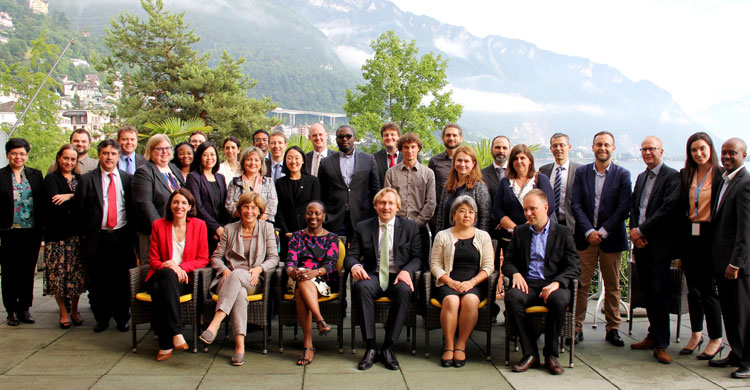UNEP Expands Access to Vast Body of Environmental Law

IKM Steering Committee
Bonn/Montreux, 26 June 2016 - Imagine for a moment that a delegate from a state has to prepare a briefing on flyway conservation ahead of a major international conference.
Previously, this delegate would have had to wade through a bewildering array of websites, trawling the internet for relevant information on legislative action and jurisprudence on flyway conservation.
The United Nations has made this delegate’s life a whole lot easier with InforMEA, a web portal that provides policymakers, journalists, researchers and the general public with better access to environmental treaties.
InforMEA is a unique tool for synergizing the objectives of the different Multilateral Environment Agreements and to see how they can contribute to the implementation of the Sustainable Development Goals – Jacques Trouvilliez, Executive Secretary of AEWA
InforMEA is a product of the MEA-IKM Initiative, an ongoing partnership between the MEAs – including AEWA - and UNEP’s Information and Knowledge Management unit.
This portal provides access to more than 60 treaties, 10,000 COP and MOP decisions, 5,000 national reports, 500 national plans, 3,700 national contacts, 3,000 sites and over 500 term concepts that are easy to search, enhancing access to information and knowledge on multilateral environment agreements (MEAs) and the vast body of international environmental law.
One of the most innovative features of InforMEA, LEO (Law and Environment Ontology), makes it far easier to search environmental treaties and documents through a database of key terms and words. Our imaginary delegate, for example, can now simply type “flyway” into the search bar and find the information needed to prepare their briefing paper. LEO brings the world one step closer to ensuring that environmental terms are accurately described across organizations and institutions, while improving the ability to retrieve information from MEAs.
InforMEA also features an e-learning tool that provides users with the opportunity to gain a more comprehensive understanding of MEAs. This resource greatly improves access to information through a collection of 21 courses on environmental law meant for academic researchers, senior NGO staff, governmental policymakers, members of the judiciary, environmental journalists and students.
The e-learning platform currently has 2,000 registered users from 160 countries, of which 800 participants have completed courses – a completion rate much higher than average for online courses. Moreover, surveys indicate that more than 90 percent of people who used the courses said that they hit their learning objectives.
In the upcoming years, InforMEA will be greatly expanded in scope. A comprehensive database of MEA publications will be one of these new services, in addition to a feature which will make treaty texts available in a machine-readable format that will allow third parties to more easily retrieve and utilize them.
The MEA-IKM Initiative will also work to enhance InforMEA’s search function, as well as revise the navigation menu to improve user experience and increase visibility on search engines. Plans are also underway to add images, videos and voice recordings to the database.
This week, InforMEA’s partners met in Montreux, Switzerland for an annual review of the MEA-IKM Initiative. Supported by the European Union (EU) and co-chaired by the United Nations Environment Programme (UNEP) and the Convention on International Trade in Endangered Species of Wild Fauna and Flora (CITES), participants included 20 MEAs, with support from four United Nations (UN) organizations: the Food and Agriculture Organization (FAO), the UN Educational, Scientific and Cultural Organization (UNESCO), the UN Economic Commission for Europe (UNECE) and UNEP. This initiative further benefits from the expertise of the International Union for Conservation of Nature (IUCN), the UN Institute for Training and Research (UNITAR), the Legal Response Initiative (LRI) and UNEP-World Conservation Monitoring Center (UNEP-WCMC) and environmental conventions covering international trade in endangered wildlife, migratory wildlife, biodiversity, genetic resources, desertification, climate change, ozone agreements and agriculture.
The original version of this article was published on the website of the United Nations Environment Programme (UNEP).
Last updated on 27 June 2016


